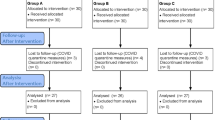Abstract
An use of a polymerization lamp to irradiate chemically hardened glass-ionomer materials may improve their properties and accelerate the setting time. However, an excessive increase in the temperature of a material poses a potential risk for the dental pulp. Maximum temperatures reported during irradiation of selected glass-ionomers have been determined in this paper for samples of sizes similar to those used in clinical practice. Three glass-ionomer materials used for filling dental cavities have been examined: GC Fuji VIII, GC Fuji Triage Pink, and GC Fuji Triage White. The LED Elipar lamp was used in the light-curing process. The temperature measurement on the outer surface of the samples was conducted with the use of the Thermovision®550 thermal imaging camera. The examined materials significantly differed in the maximum temperatures they reached, as well as the time they required to reach these temperatures. A statistically significant positive correlation of maximum temperature with the sample weight was observed for the GC Fuji Triage Pink material.





Similar content being viewed by others
References
Kleverlaan CJ, Van Duinen RNB, Feilzer AJ. Mechanical properties of glass ionomer cements affected by curing methods. Dent Mater. 2004;20:45–50.
Guglielmi CAB, Mohana A, Hesse D, Lenzi TL, Bonini GC, Raggio DP. Influence of ultrasound or halogen light on microleakage and hardness of enamel adjacent to glass ionomer cement. Int J Paediatr Dent. 2012;22:110–5. https://doi.org/10.1111/j.1365-263X.2011.01173.x.
Tolidis K, Dionysopoulos D, Gerasimou P, Sfeikos T. Effect of radiant heat and ultrasound on fluoride release and surface hardness of glass ionomer cements. J Appl Biomater Funct Mater. 2016;14:e463–9.
Powers JM, Wataha JC. Dental materials: properties and manipulation. New York: Elsevier/Mosby; 2013.
Tian KV, Yang B, Yue Y, Bowron DT, Mayers J, Donnan RS, et al. Atomic and vibrational origins of mechanical toughness in bioactive cement during setting. Nat Commun. 2015;6:8631.
Gorseta K, Skrinjarić T, Glavina D. The effect of heating and ultrasound on the shear bond strength of glass ionomer cement. Coll Antropol. 2012;36:1307–12.
Janeczek M, Herman K, Fita K, Dudek K, Kowalczyk-Zając M, Czajczyńska-Waszkiewicz A, et al. Assessment of heat hazard during the polymerization of selected light-sensitive dental materials. Biomed Res Int. 2016;2016:1–7.
Lopes LG, Franco EB, Pereira JC, Mondelli RFL. Effect of light-curing units and activation mode on polymerization shrinkage and shrinkage stress of composite resins. J Appl Oral Sci. 2008;16:35–42.
Usamentiaga R, Venegas P, Guerediaga J, Vega L, Molleda J, Bulnes F. Infrared thermography for temperature measurement and non-destructive testing. Sens Multidiscip Dig Publ Inst. 2014;14:12305–48.
Al-Qudah AA, Mitchell CA, Biagioni PA, Hussey DL. Thermographic investigation of contemporary resin-containing dental materials. J Dent. 2005;33:593–602.
Raab WH. Temperature related changes in pulpal microcirculation. Proc Finn Dent Soc. 1992; 469–79. http://www.ncbi.nlm.nih.gov/pubmed/1508905.
Planinsic G. Infrared thermal imaging: fundamentals, research and applications. Eur J Phys. 2011;32:1431.
Khaksaran NK, Kashi TJ, Rakhshan V, Zeynolabedin ZS, Bagheri H. Kinetics of pulpal temperature rise during light curing of 6 bonding agents from different generations, using light emitting diode and quartz-tungsten-halogen units: an in vitro simulation. Dent Res J (Isfahan). 2015;12:173–80.
Kim RJY, Lee IB, Yoo JY, Park SJ, Kim SY, Yi YA, et al. Real-time analysis of temperature changes in composite increments and pulp chamber during photopolymerization. Biomed Res Int. 2015;2015:1–6.
Gavic L, Gorseta K, Glavina D, Czarnecka B, Nicholson JW. Heat transfer properties and thermal cure of glass-ionomer dental cements. J Mater Sci Mater Med. 2015;26:249. https://doi.org/10.1007/s10856-015-5578-0.
Rafeek RN. The effects of heat treatment on selected properties of a conventional and a resin-modified glass ionomer cement. J Mater Sci Mater Med. 2008;19:1913–20. https://doi.org/10.1007/s10856-007-3270-8.
Skrinjaric K, Vranic DN, Glavina D, Skrinjaric I. Heat-treated glass ionomer cement fissure sealants: Retention after 1 year follow-up. Int J Paediatr Dent. 2008;18:368–73. https://doi.org/10.1111/j.1365-263X.2007.00896.x.
Roberts H, Berzins D. Thermal analysis of contemporary glass-ionomer restorative materials. J Therm Anal Calorim. 2014;115:2099–106. https://doi.org/10.1007/s10973-013-3428-1.
Acknowledgements
Financial support from the National Science Centre over the course of the realization of the project ‘Preparation and characterisation of biocomposites based on nanoapatites for theranostic,’ no. UMO-2015/19/B/ST5/01330, is gratefully acknowledged.
Author information
Authors and Affiliations
Corresponding author
Rights and permissions
About this article
Cite this article
Dobrzynski, M., Herman, K., Bryla, E. et al. The heat risk during hardening of dental glass-ionomer cements using a light-curing. J Therm Anal Calorim 135, 3123–3128 (2019). https://doi.org/10.1007/s10973-018-7504-4
Received:
Accepted:
Published:
Issue Date:
DOI: https://doi.org/10.1007/s10973-018-7504-4




